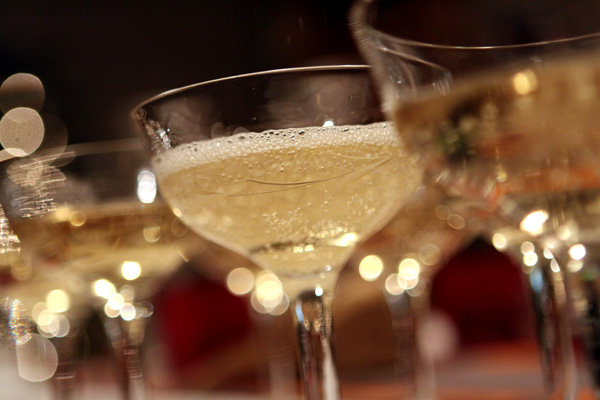
This article is sponsored by Tesco Wine.
Evoking luxury and indulgence, sipping a tall glass of bubbly is a real treat for many of us on special occasions. From weddings to graduations, champagne is the perfect drink for a stylish, celebratory toast. However, most people know little about how champagne is made or where it comes from.
Region of Champagne
France is a prime wine producing country, and the region of Champagne lies to the east of Paris, where 35,000 hectares of vineyards stretch for miles, connecting a myriad of towns and villages in the north. Here the climate is relatively rugged with warm summers and cool winters, and temperatures average around 11 to 12 degrees. Mild conditions nurture distinctive habitats and the chalky soils have a thin layer of topsoil, providing a perfect level of drainage for the vines to grow.

History and Grapes
The history of the Champagne region and wine making extends back to the Middle Ages and, during the 17th and 18th centuries, its reputation for the well-known drink of the same name grew with the development of sparkling wine houses. In the Aube region, Pinot Noir is the most widely planted grape, growing particularly well around Montagne de Reims. Three villages nestle against forests here, where vineyards fan into the surrounding landscapes. Mailly-Champagne boasts 270 hectares, dominated by Pinot Noir, while neighbouring Verzenay is even larger, and east-facing Verzy has more recently become a haven for the growth of this grape. Montagne de Reims is nicknamed the “Champagne Mountain” with good reason, rising to a height of 286 metres and simply carpeted with vines – a beautiful sight for all to behold. There are many other areas in and around Champagne, which also rely upon wine production.
Champagne Production
During the 17th century the process of champagne production was invented using stronger bottle design, the development of corks, and the addition of sugar and yeast for secondary fermentation. Today it varies depending upon the drink. Vintage champagne is made from a single vintage – but only if the crop is good enough, relying upon six years, or even longer, to mature in cellars. Non-vintage options are blended using three grapes — Pinot Noir, Pinot Meunier and Chardonnay — from two or three years production, giving them consistency. There are many more types of champagne, primarily made from the aforementioned grapes.
Visiting Champagne
Visitors to the region of Champagne can learn all about how this sparkling drink is made, touring interesting geological formations including caves and getting off the beaten track to discover exceptional vineyards where the finest grapes thrive.

